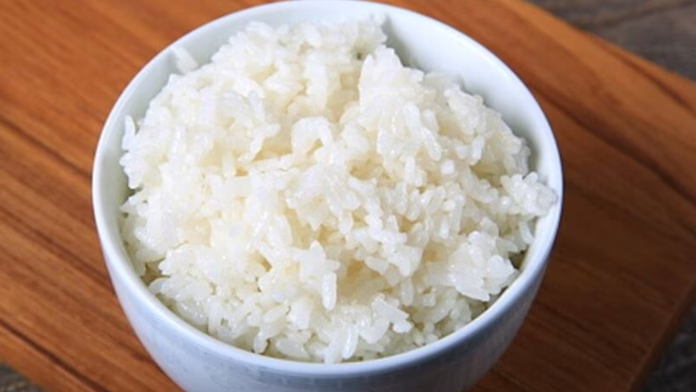Rice is a staple food in many cultures around the world. It’s inexpensive, easy to cook, and can be used as a side dish or as a main ingredient in a variety of recipes. However, many people wonder whether it’s safe to eat leftover rice. In this article, we’ll explore the safety concerns around leftover rice and what experts have to say about it.
Why Is Leftover Rice a Concern?
The main concern with leftover rice is the potential for bacterial growth. Uncooked rice can contain spores of Bacillus cereus, a bacterium that can cause food poisoning. These spores can survive the cooking process, and if rice is not stored properly, the spores can multiply and produce toxins that can cause illness.
The danger zone for bacterial growth is between 40°F and 140°F. When rice is cooked, it’s typically above 140°F, which kills any bacteria present. However, when rice is left at room temperature for too long, it can fall into the danger zone, and bacteria can begin to grow.
Is It Safe to Eat Leftover Rice?
The answer to this question is both yes and no. If leftover rice is stored properly and reheated correctly, it can be safe to eat. However, if it’s not stored or reheated correctly, it can be dangerous.
When storing leftover rice, it’s important to cool it down quickly and store it in the refrigerator within two hours of cooking. If the rice is left at room temperature for more than two hours, it should be thrown away. When reheating leftover rice, it’s important to make sure it’s heated to a temperature of at least 165°F to kill any bacteria present.
It’s also important to note that some types of rice are more susceptible to bacterial growth than others. Brown rice, for example, has a higher oil content than white rice, which can make it more prone to spoilage. Additionally, fried rice and other rice dishes that contain meat or eggs can also be more susceptible to bacterial growth.
How to Store Leftover Rice?
To store leftover rice, it’s important to follow a few guidelines to ensure it stays safe to eat. Here are some tips for storing leftover rice:
Cool the rice down quickly: As soon as the rice is done cooking, transfer it to a shallow container and place it in the refrigerator. This will help it cool down quickly and prevent bacteria from growing.
Store the rice in an airtight container: Once the rice has cooled down, transfer it to an airtight container. This will help prevent moisture from building up and bacteria from growing.
Store the rice in the refrigerator: Leftover rice should be stored in the refrigerator within two hours of cooking. It can be stored in the refrigerator for up to four days.
How to Reheat Leftover Rice?
There are several ways to reheat leftover rice, including in the microwave, on the stovetop, or in the oven. Here are some tips for each method:
Microwave:
- Transfer the rice to a microwave-safe dish and cover it with a damp paper towel.
- Microwave on high for 1-2 minutes, or until the rice is heated through.
- Stir the rice and check the temperature before serving.
Stovetop:
- Place the rice in a saucepan with a splash of water or broth.
- Cover the pan with a lid and heat over medium-low heat until the rice is heated through.
- Stir the rice and check the temperature before serving.
Oven:
- Preheat the oven to 350 degrees Fahrenheit (175 degrees Celsius).
- Place the rice in an oven-safe dish and cover it with foil.
- Bake for 10-15 minutes, or until the rice is heated through.
- Stir the rice and check the temperature before serving.
- It is important to note that rice should only be reheated once. If you have reheated leftover rice and there are still leftovers, it is best to discard them.
Why would you eat leftover rice in the first place & does it have any health benefits?
There are several benefits to eating leftover rice. For one, it is a convenient and cost-effective way to enjoy a meal. Leftover rice can be used in a variety of dishes, such as fried rice, rice pudding, or rice soup. It can also be added to salads, stir-fries, or burrito bowls.
In addition, leftover rice can be a healthier option than freshly cooked rice. When rice is cooked and then cooled, it forms resistant starch, which is a type of carbohydrate that resists digestion in the small intestine. This can lead to a slower release of glucose into the bloodstream, which can help regulate blood sugar levels and improve insulin sensitivity.
Resistant starch can also act as a prebiotic, which means that it feeds the beneficial bacteria in the gut. This can improve gut health and reduce the risk of certain diseases, such as colon cancer.
The topic of whether it is okay to eat leftover rice has been debated for years. However, after consulting with experts, it is safe to say that consuming leftover rice is generally safe as long as proper food safety measures are taken.
Experts recommend storing cooked rice in the refrigerator within two hours of cooking and reheating it thoroughly to kill any potential bacteria. Furthermore, it is important to note that not all leftover rice should be consumed, especially if it has been left out for an extended period or has not been stored properly. Ultimately, it is up to individuals to take the necessary precautions when it comes to leftover rice consumption, but by following expert advice, they can continue to enjoy this staple food without any worries.





